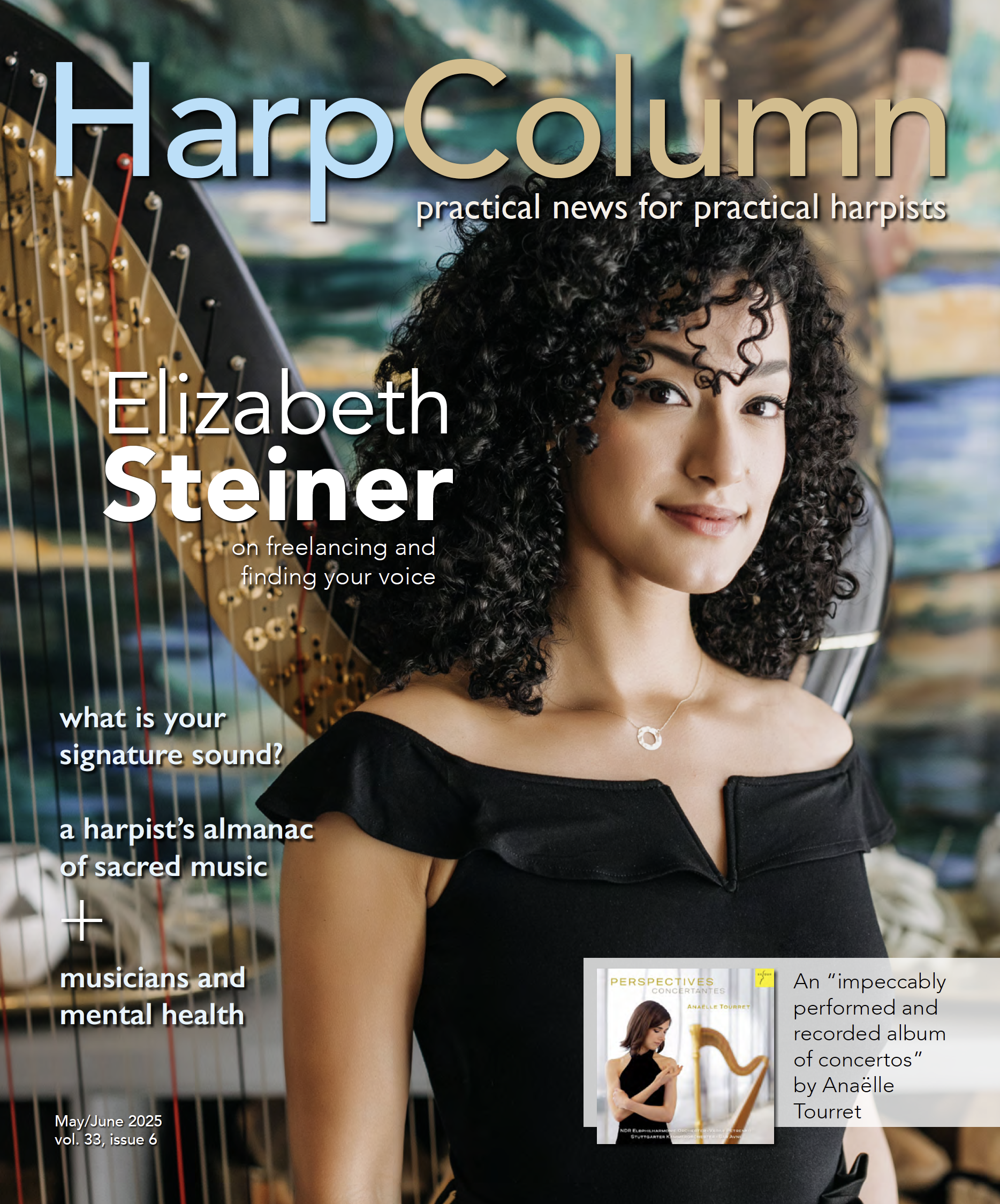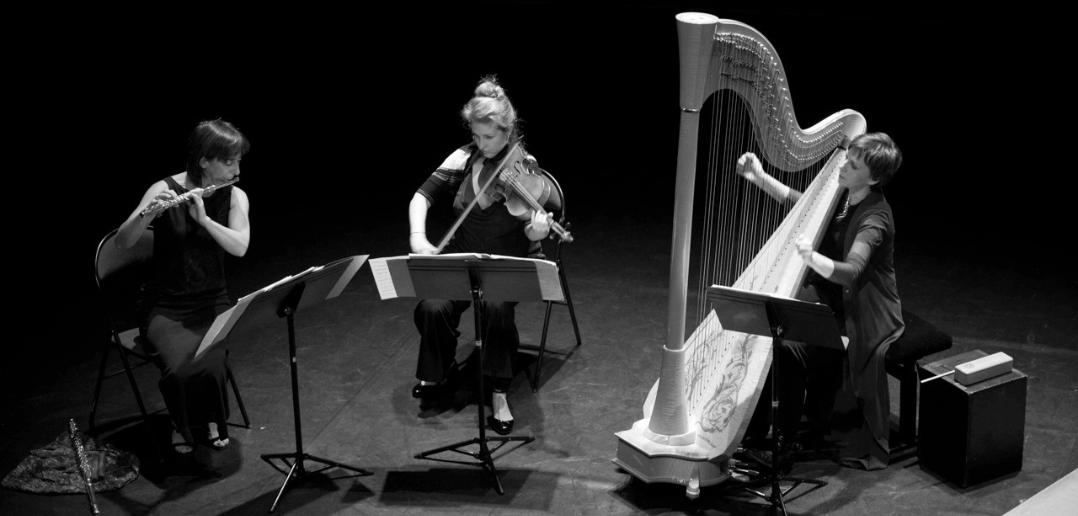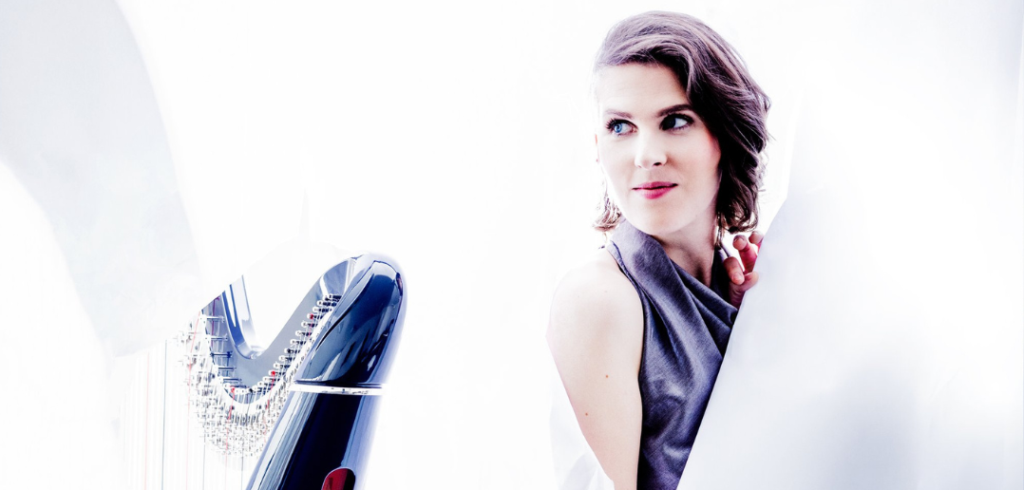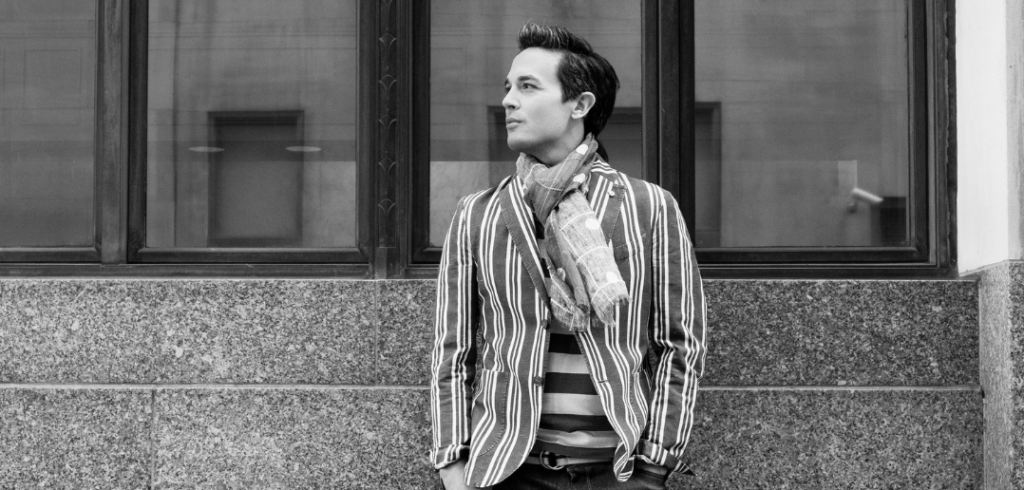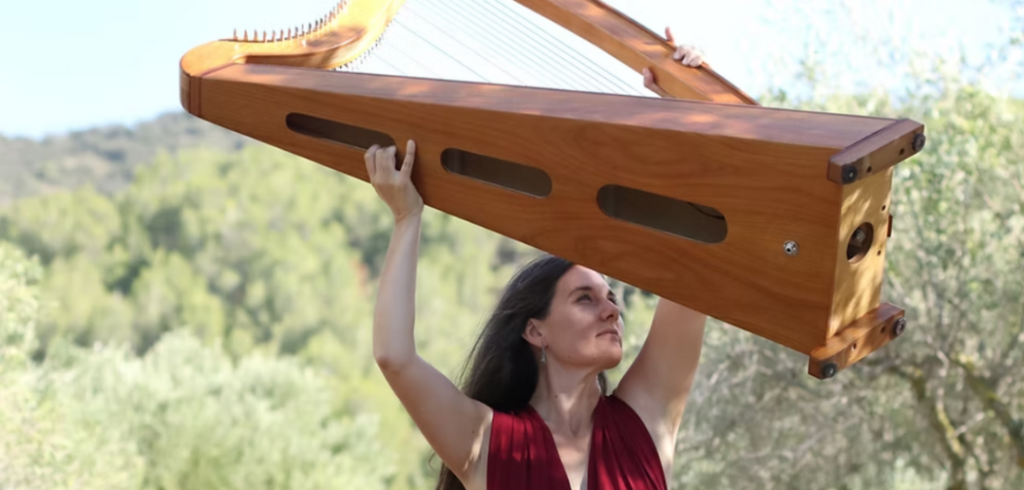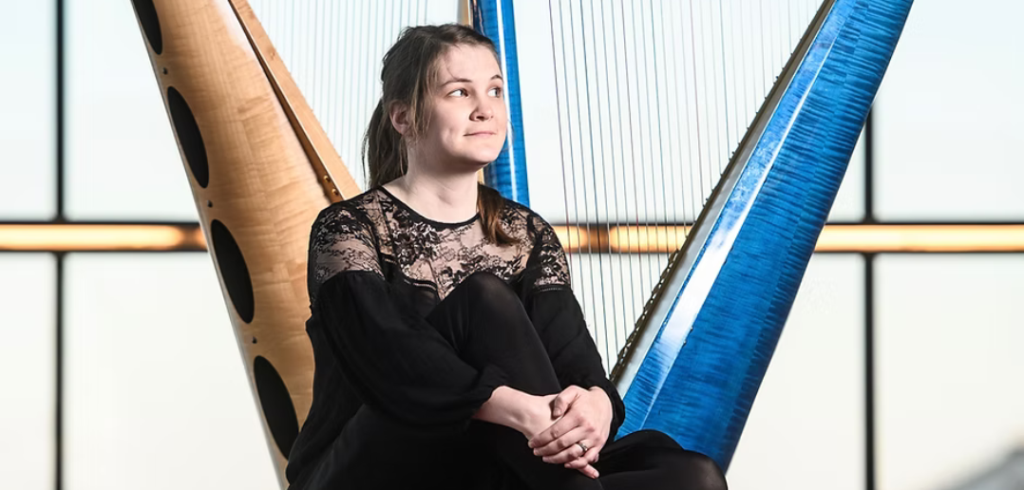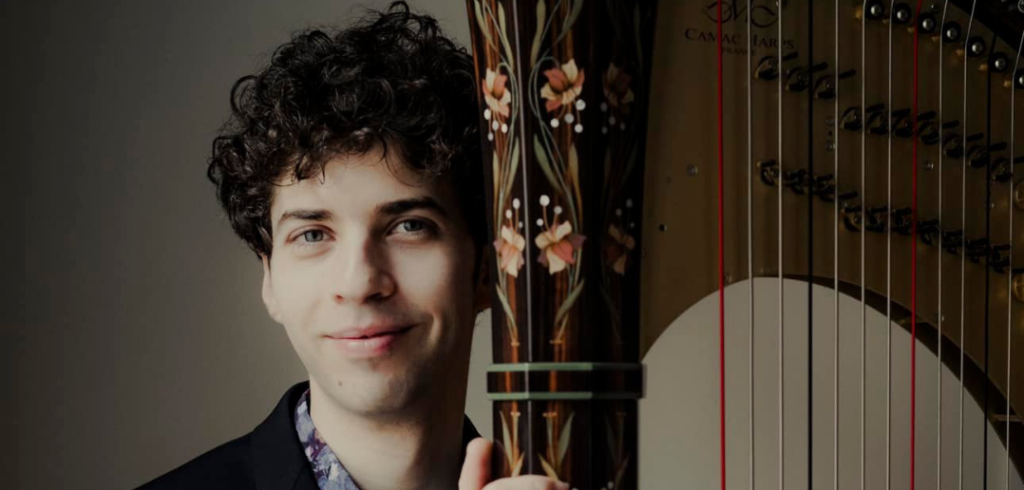The flute-viola-harp ensemble Trio Antara released its new album Concert pour Debussy on Sept. 13. The album is now available via the French label Paraty on major streaming platforms and as a CD. According to a press release, the recording is the result of several years of collaboration between Trio Antara—comprising Emmanuelle Ophèle on flute, Odile Auboin on viola, and Ghislaine Petit-Volta on harp—and composer and artistic director Benoît Sitzia. The album features transcriptions by the members of the trio and by Sitzia, interpreting works by Jean-Philippe Rameau, Claude Debussy, Paul Dukas, and Manuel de Falla, as well as a five-movement original composition by Sitzia.
The program grew out of a multimedia project titled “Debussy, L’Echo d’une guerre” (Debussy, The Echo of a War), which Trio Antara performed in 2018 in honor of the centenary of the death of Claude Debussy. Petit-Volta describes this performance as “a representation of Debussy’s thought and poetics in music, text and photos: it included letters from Debussy during the war, excerpts from Eric Vuillard’s book La Bataille d’Occident [about World War I], and photos of reflections in the waters of the Creuse [river] taken by Jean-Marc Volta (the poetics of water, a theme dear to Debussy).”
For the album, the members of the trio later incorporated their long-standing work on Debussy’s Sonata for flute, viola, and harp (a project that began in Avignon on July 12, 2006, with composer and conductor Pierre Boulez), and on the deeper meaning of the cycle from which it comes (Six Sonatas for Various Instruments). Debussy composed the first three sonatas between 1915 and 1917, but his death in 1918 left this cycle unfinished.
Petit-Volta says that transcribing works for harpsichord, violin, viola da gamba, guitar, or piano for Debussy’s famous combination of flute, viola, and harp results in “color transformations without ever detracting from the original [musical] text. If we consider that all musical notation is already a transcription, that of an abstract idea that only takes shape once the pen has taken hold of it, then the interpretation of this notation proposes yet another type of transcription.”
The album Concert pour Debussy pays homage to Debussy’s musical influences, his own style, and his modern musical legacy. Petit-Volta concludes, “The tribute to Claude Debussy is thus rendered here by the choice of composers and pieces presented, as much as by the highly original instrumental color derived from his Sonata for flute, viola and harp.”
For more information, view the album on Paraty.




